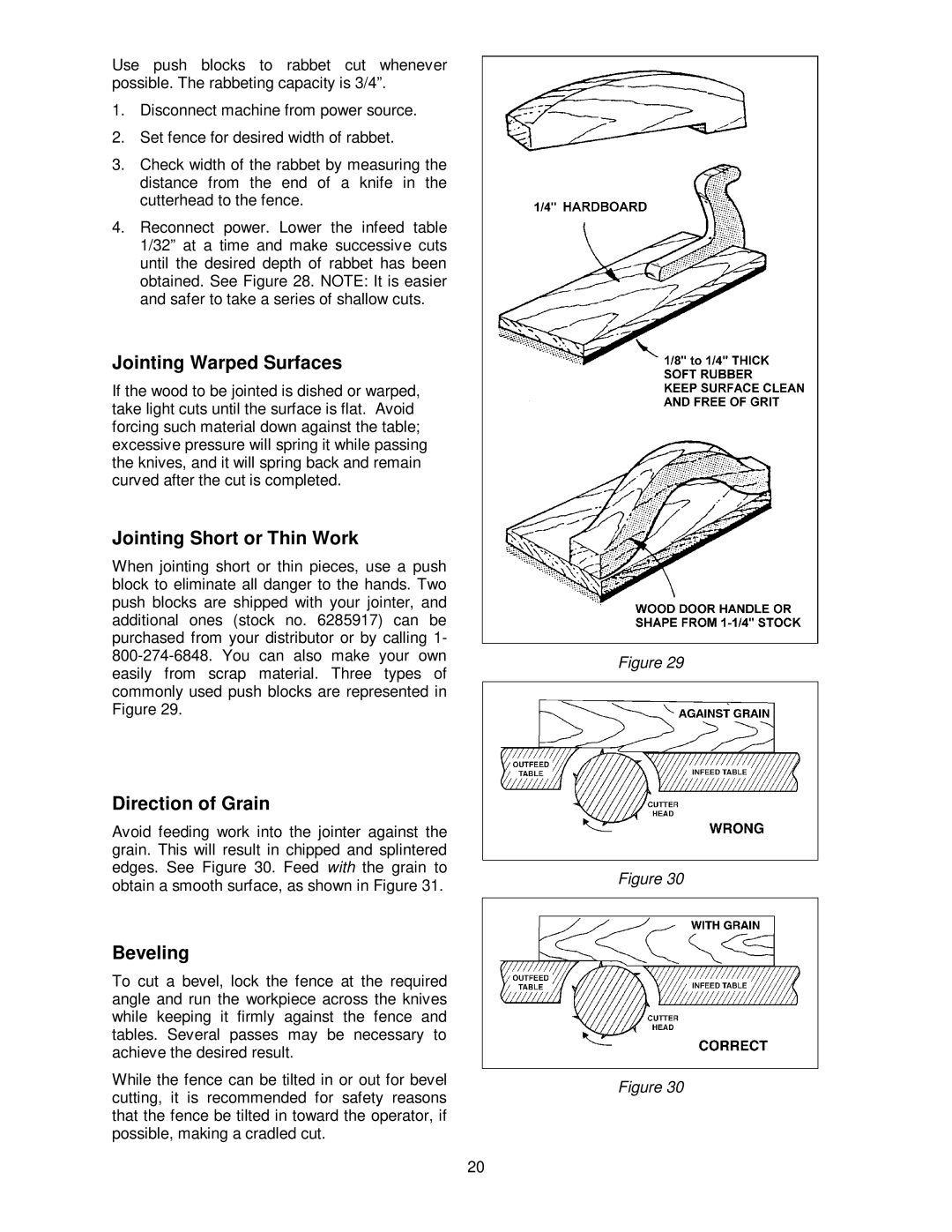
Use push blocks to rabbet cut whenever possible. The rabbeting capacity is 3/4”.
1.Disconnect machine from power source.
2.Set fence for desired width of rabbet.
3.Check width of the rabbet by measuring the distance from the end of a knife in the cutterhead to the fence.
4.Reconnect power. Lower the infeed table 1/32” at a time and make successive cuts until the desired depth of rabbet has been obtained. See Figure 28. NOTE: It is easier and safer to take a series of shallow cuts.
Jointing Warped Surfaces
If the wood to be jointed is dished or warped, take light cuts until the surface is flat. Avoid forcing such material down against the table; excessive pressure will spring it while passing the knives, and it will spring back and remain curved after the cut is completed.
Jointing Short or Thin Work
When jointing short or thin pieces, use a push block to eliminate all danger to the hands. Two push blocks are shipped with your jointer, and additional ones (stock no. 6285917) can be purchased from your distributor or by calling 1-
Direction of Grain
Avoid feeding work into the jointer against the grain. This will result in chipped and splintered edges. See Figure 30. Feed with the grain to obtain a smooth surface, as shown in Figure 31.
Beveling
To cut a bevel, lock the fence at the required angle and run the workpiece across the knives while keeping it firmly against the fence and tables. Several passes may be necessary to achieve the desired result.
While the fence can be tilted in or out for bevel cutting, it is recommended for safety reasons that the fence be tilted in toward the operator, if possible, making a cradled cut.
Figure 29
Figure 30
Figure 30
20
